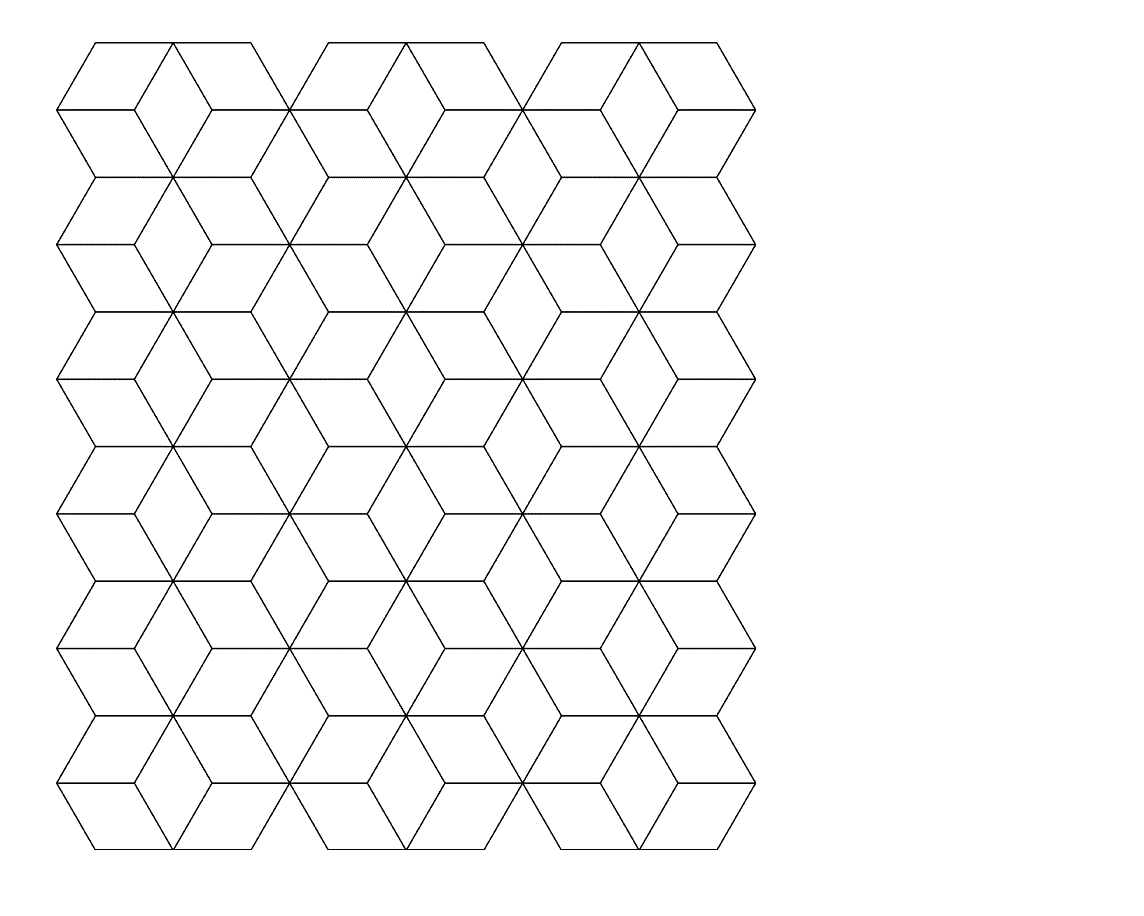

The pattern of shapes still goes infinitely in all directions, but the design never looks exactly the same. In the 1970s, the British mathematician and physicist Roger Penrose discovered non-periodic tessellations. Whatever direction you go, they will look the same everywhere. Some polygonal ice cracks provide an example of. They consist of one pattern that is repeated again and again. A goodness-of-fit statistic is derived and examined by testing randomly generated convex tessellations. Suppose that m of these polygons meet at each. It may be better to show a counter-example here to explain the monohedral tessellations.Īll the tessellations mentioned up to this point are Periodic tessellations. Suppose Pn is a regular n sided polygon and there is a tessellation of the plane by polygons congruent to Pn. All regular tessellations are also monohedral. In 2-D, the Voronoi polyhedron is a polygon, the sides of which are located at mid-distance from the neighbouring cells. If you use only congruent shapes to make a tessellation, then it is called Monohedral Tessellation no matter the shape is. You can use Polypad to have a closer look to these 15 irregular pentagons and create tessellations with them. Among the irregular pentagons, it is proven that only 15 of them can tesselate. When parsing gbXML files, I need to robustly tessellate complex polygons into a set of triangles for rendering in WebGL. We can use any polygon, any shape, or any figure like the famous artist and mathematician Escher to create Irregular tessellationsĪmong the irregular polygons, we know that all triangle and quadrilateral types can tessellate. The good news is, we do not need to use regular polygons all the time. In the examples above, we have seen that equilateral triangles tessellate a plane, but pentagons do not tessellate a plane. Not all regular polygons tessellate a plane. If one is allowed to use more than one type of regular polygons to create a tiling, then it is called semi-regular tessellation.Ĭlick here for the lesson plan of Semi - Regular Tessellations. regular tessellation A regular tessellation uses one type of regular polygon to tessellate a plane. If you try regular polygons, you ll see that only equilateral triangles, squares, and regular hexagons can create regular tessellations.Ĭlick here for the lesson plan of Regular Tessellations. the most well-known ones are regular tessellations which made up of only one regular polygon. But it is not clear which triangle is worst for tiling the hyperbolic plane.There are several types of tessellations. If p, q, r are irrational, such triangles do not tile. Note 3: Here is a family of non-regular polygons that, I gathered, can tile the hyperbolic plane: Triangles with angle measures: pi/p, pi/ q, pi/r where p,q,r integers are non-regular polygons that tile the hyperbolic plane.

Note 2: If one defines a parallelogram as a quad where pairs of lines that contain opposite sides do not intersect, then, in hyperbolic geometry, opposite sides of a parallelogram need not be congruent, so even the usual 2D periodic lattices of Euclidean plane do not have obvious analogs. One can also ask about the worst polygons for covering in the two geometries. Note 1: All these questions can be asked in elliptic geometry as well. Which convex region gives worst packing in hyperbolic plane? So, one can ask: which triangle(quadrilateral) gives worst(least) packing fraction for the hyperbolic plane? There indeed are triangles and quadrilaterals that cannot tile the hyperbolic plane (example given in note 3 below). Simple examples of tessellations are tiled floors, brickwork, and textiles. Tessellations have many real-world examples and are a physical link between art and mathematics. A natural question would be: In non-Euclidean geometry, are there triangles and quadrilaterals that cannot tile the hyperbolic plane? Tessellation, or tiling, is the covering of the plane by closed shapes, called tiles, without gaps or overlaps 17, page 157.

It is well known that in Euclidean geometry, all triangles and all quadrilaterals tessellate the plane. How can we find semi-regular tessellations in a systematic. The tiles in a regular tessellation are congruent regular polygons. The packing fraction of a packing in some space is the fraction of the space filled by the figures making up the packing. The only tessellation by regular polygons requires an equilateral triangle, a square or a hexagon. of tiles that fill the plane with no gaps or overlaps.


 0 kommentar(er)
0 kommentar(er)
